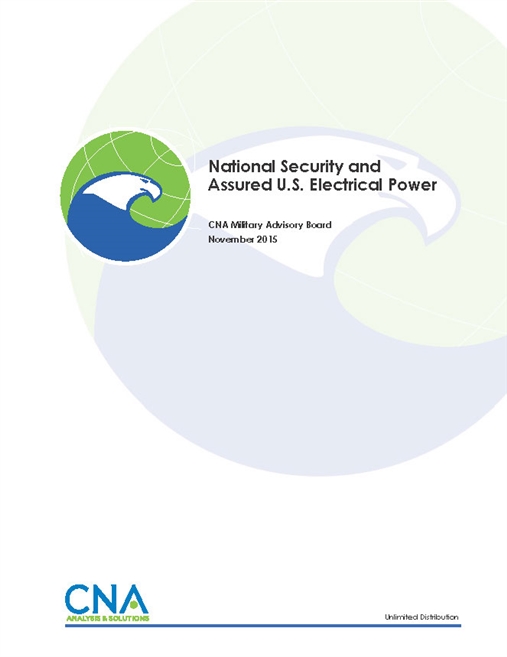The trends are clear. The current way Americans produce and distribute electricity is at increasing risk, while over the next half-century the way we produce and use energy will radically change. Just as the twentieth century was dominated by energy derived from oil and coal, the twenty-first century will see much greater energy diversity using solar, wind, small nuclear reactors, hydrogen, and other low-carbon sources.
The current U.S. electric grid’s overreliance on aging twentieth-century technology—based on centralized power generation and interconnected distribution architecture—makes it susceptible to a wide variety of threats, including severe weather and other natural disasters, direct physical attack or cyberattack, and accidents associated with the age of the grid or human error. The national security vulnerabilities associated with the grid, its discrete power generation and nodal distribution, and the design of power transmission leave the U.S. open to both small/short-duration and large/long-duration power outages.
Between 2011 and 2014, electric utilities reported 362 targeted attacks that caused outages or other power disruptions. Of those, 14 were cyberattacks, and the rest were physical in nature. While seldom publicized, the growing number of these attacks is a distressing trend. This trend requires us to consider the potential for even more serious assaults, with strategic consequences.
Assuring that we have reliable, accessible, sustainable, and affordable electric power is a national security imperative. Our increased reliance on electric power in every sector of our lives, including communications, commerce, transportation, health and emergency services, in addition to homeland and national defense, means that large-scale disruptions of electrical power will have immediate costs to our economy and can place our security at risk.
Whether it is the ability of first responders to answer the call to emergencies here in the United States, or the readiness and capability of our military service members to operate effectively in the U.S. or deployed in theater, these missions are directly linked to assured domestic electric power.
The vulnerabilities inherent in today’s grid expose it to a one-two punch: First, cities and regions get their power primarily from large clustered electric power producers. Second, that electricity is typically transmitted over long distances, across vulnerable, high-voltage infrastructure. Nearly every part of the generation and transmission network is at risk to attack, weather, or other threats that could result in a sustained power outage to major cities or entire regions of the nation. With the grid of the future, electricity will be produced closer to consumers, from a wide variety of sources, and stored or shared until needed. The new production paradigm will be driven by technological advances, demand for increased flexibility, more secure and lower-cost power, and a growing public demand for cleaner energy sources.
Download reportApproved for distribution.
Details
- Pages: 36
- Document Number:
- Publication Date: 11/9/2015
